This post contains affiliate links.
Big hands are considered a blessing when playing the piano because it’s easier to reach for further notes on the piano and play loudly with bigger hands. However, hands that are too big can be an inconvenience. This is because big hands come with thick fingers which can accidentally play unwanted neighbouring notes. So if you have fat fingers, is playing the piano possible and is there anything you can do about it?
People with fat fingers can play the piano by using piano techniques to fit their fingers in between black keys. Famous pianists like Rachmaninoff and Rubinstein had very thick fingers and they still managed to achieve great success playing the piano.
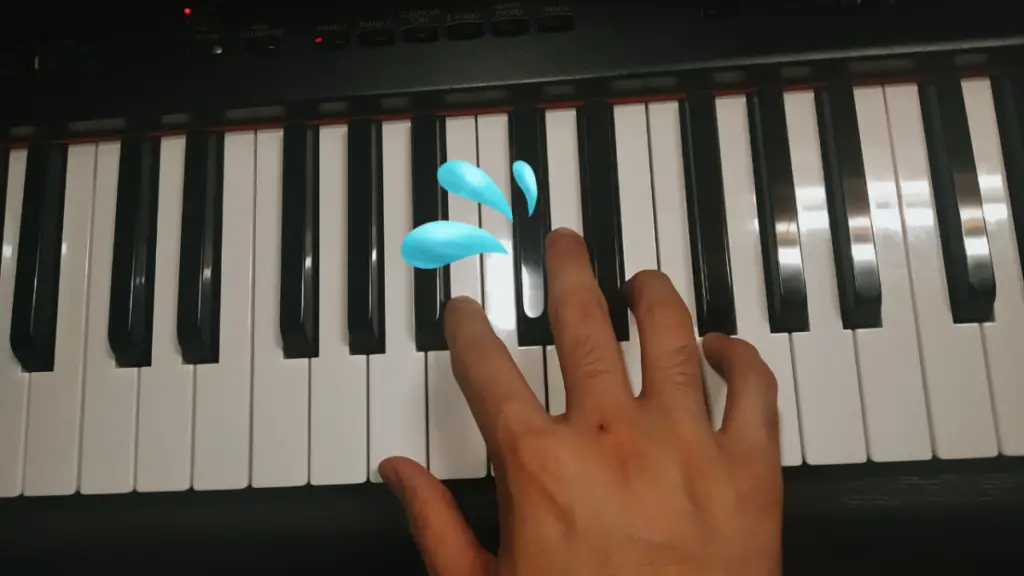
Continue reading to understand why playing the piano can sometimes be trickier if you have fat fingers and gain some techniques you can use to fit your fingers in between black keys.
Finally, if you are feeling down because of your fingers, I’ll give a few examples of successful pianists with fat fingers to show you that anyone can learn to play the piano.
Why is it harder to play the piano with fat fingers?
This is because people with thick fingers are more likely to accidentally press down on neighbouring keys, creating an unpleasant sound.
So then if you can’t change your fingers, then play on a piano with wider keys. Problem solved, right?
Unfortunately, while hands come in all shapes and sizes, piano keys are usually available in one size only, regardless of what piano it is. This is also the reason why while pianos can vary in length and height, their width is always identical.
The only exceptions to the key size are electric keyboards or midi controllers which have narrower keys because they are mainly used for music production and not used to play piano pieces.
This means that there isn’t an option to buy a piano with wider keys that will fit your thick fingers and you’ll be stuck having to deal with standard-size keys.
On a side note, it’s a good thing that there isn’t an option to choose how wide you want the piano keys to be. Imagine watching a pianist with small hands struggle to reach for further notes on a piano with wider keys or seeing a giant like Shaq – a famous basketball player – trying a piano with narrow keys. It’ll be like Gulliver when he got washed ashore on an island of tiny people!
Back on the topic, while there isn’t a way to change how wide piano keys are, you can instead use the following ways to help you play a key without accidentally playing the neighbouring keys:
How to play piano with fat fingers
Move your forearm to play white keys in between black keys
Since it’s difficult to fit your fingers in between black keys, avoid pressing at that position and instead move your finger downwards and press the white key at a spot that is clear of any black keys.
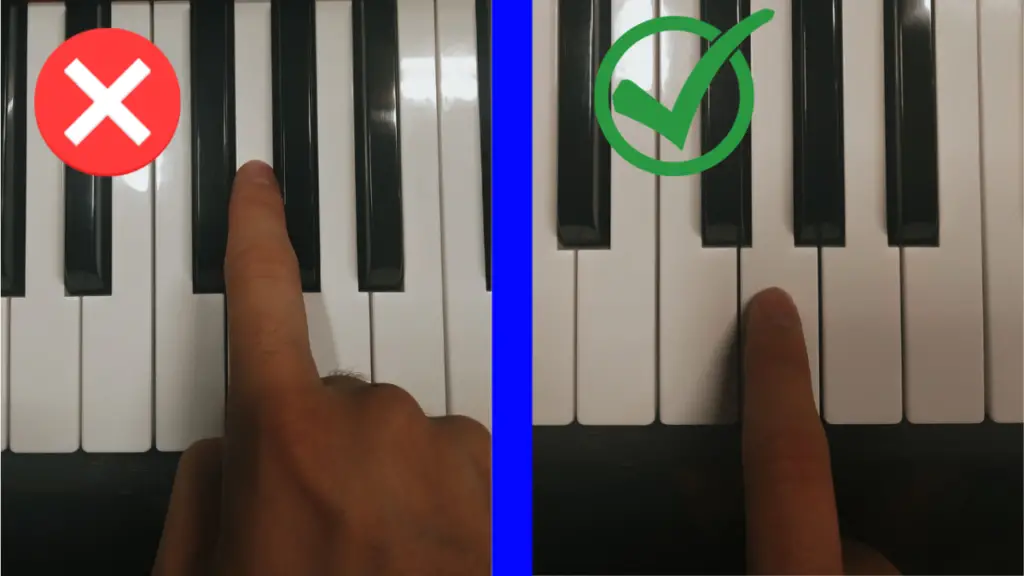
Now, what about situations where you have to place your fingers in between black keys since it’s the most natural position for them to be in? Here’s how moving your arm helps you play the white key naturally without placing your fingers between black keys:
Take the example of the first 5 notes of the Eb Major scale: Eb F G Ab Bb. If you use fingers position 1-5 with your arm in a fixed position, you’ll have no choice but the play the note G by placing your middle finger between the black keys.
However, by also moving your arm and wrist in a swinging motion, you can avoid placing your finger between black keys as your entire arm swings to its lowest position:
It starts by pulling your forearm slightly to yourself.
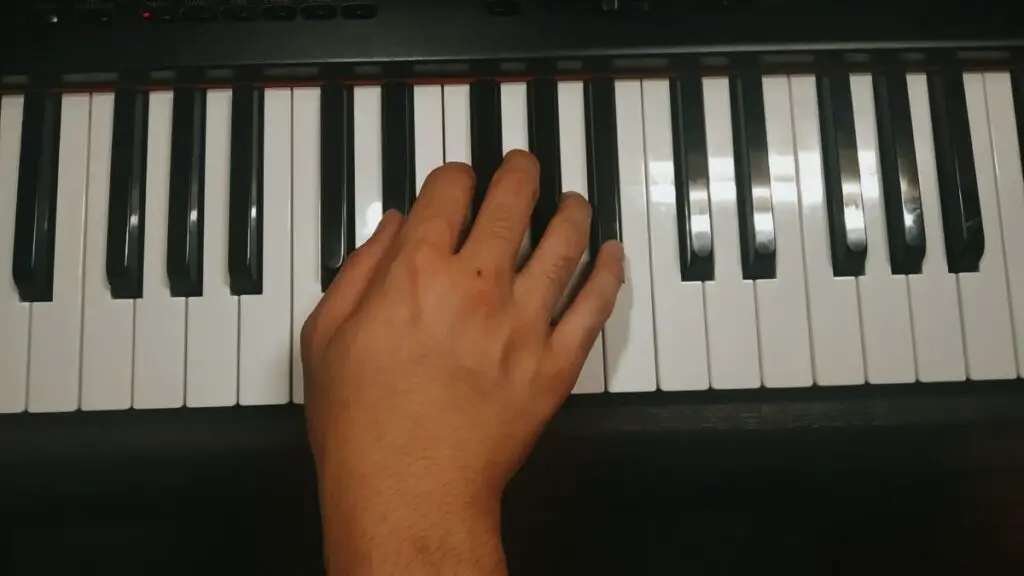
As you play and swing your forearm, pull your arm a bit towards your body so you can press the lowest part of the white key.
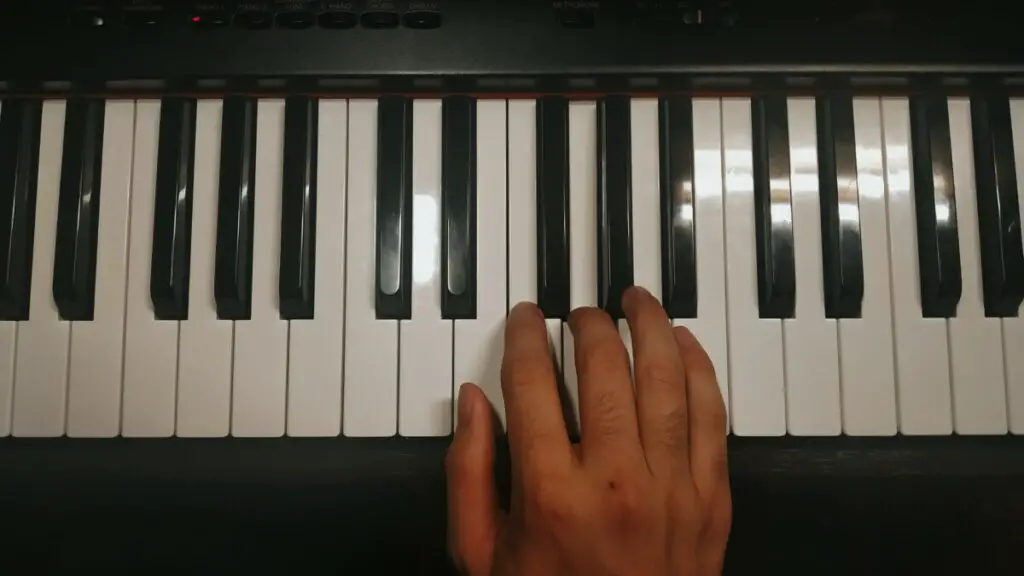
Finally, as you complete the swing, you’ll be able to reach the black keys Ab Bb naturally.
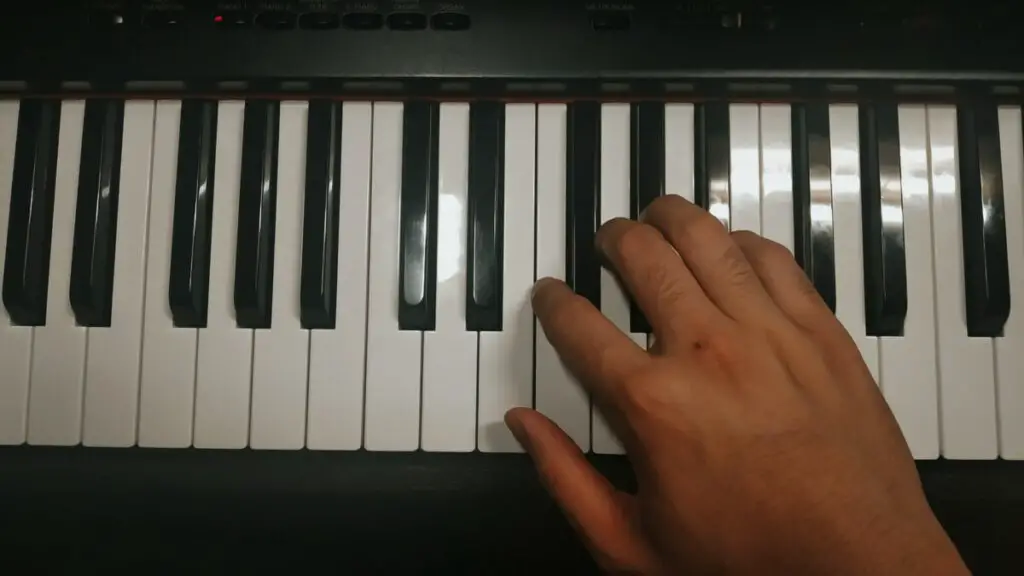
Here’s a video demonstration of how it’s done:
Push your finger inside as you press down on the key
Usually, when playing the piano, we simply press down on the key vertically. However, for people with fat fingers, the sides of their fingers may also accidentally press down the neighbouring black keys.
So in addition to pressing down vertically, also use your shoulder to push your fingers inwards towards the fallboard. Push it such that if you weren’t pressing down on the key, your finger would simply slide along the white key.
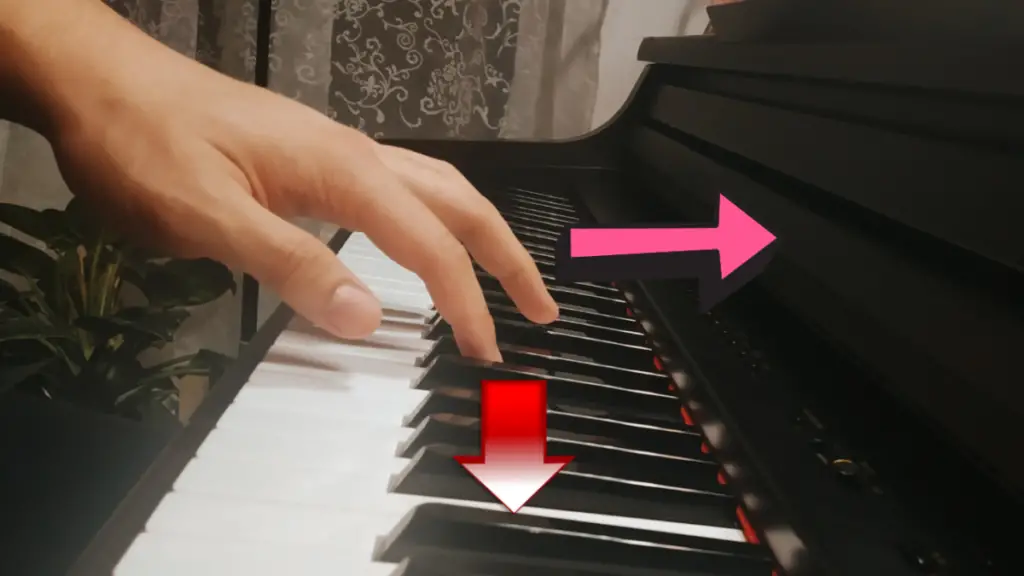
The explanation for this is that by also pushing your fingers inside, you’re replacing downward friction on the neighbouring black keys with sideways or slanted friction. This means the black keys won’t go down because there’s less force acting upon them.
I’ve heard of a story of a teacher having their student with fat fingers do this and the student successfully pressed the white key without the neighbouring black keys also going down.
Rotate your forearm so your finger is on its side
By slightly rotating your wrist and forearm, you can press down on the key using the side of your finger.
This makes it easier to press down the white key as the side of your finger is narrower than your finger in the normal position.
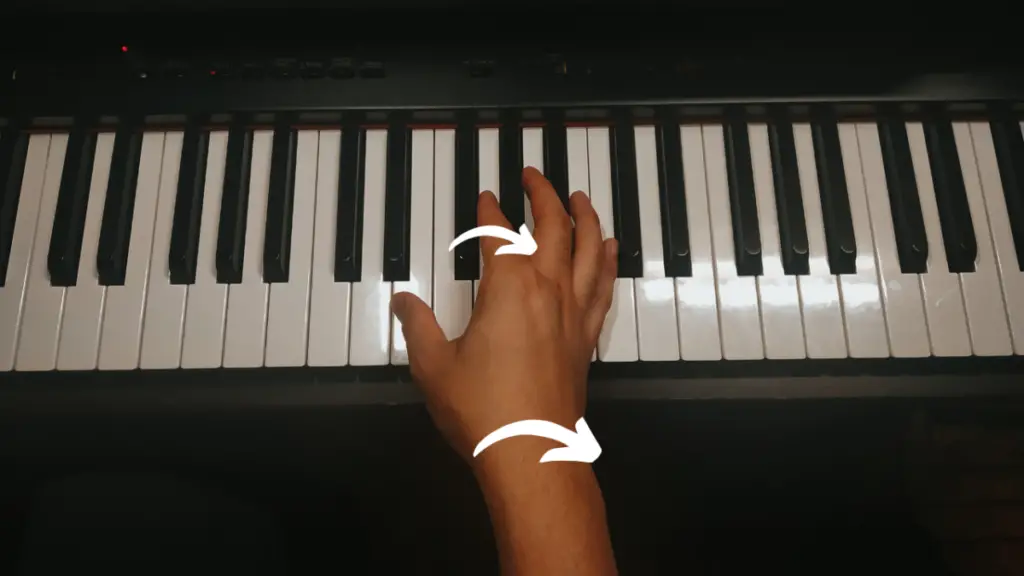
Lose weight
If you have fat fingers due to being overweight, you can try to lose some weight by dieting or exercising.
According to this health article, your fingers have fat pads to protect the bones and ligaments in the fingers. This is why many people can’t remove their wedding rings from their fingers as they get overweight.
So by losing weight, your fingers will become thinner and can easily fit between black keys.
Avoid difficult piano pieces due to your thick fingers
A simple solution where you avoid all piano pieces that have passages that pose a challenge to your thick fingers. An example is maybe a piece that has a scale section with many black keys in it.
However, by using the methods discussed above, you’ll be able to conquer most piano pieces that you come across.
Famous pianists with thick fingers
Here are examples of famous pianists in the past that had thick fingers to motivate and show you that anyone can learn to play the piano with enough hard work and the mindset of never giving up:
Anton Rubinstein was a Russian pianist, composer and conductor, who was an influential figure in the Russian music world as he founded the St. Petersburg Conservatory which is still in operation today.
He was also argued to be one of the best pianists of all time, with skills rivalling that of Liszt, despite having fingers so thick that none of them fit between the black keys. Josef Hoffman – another great pianist – commented that Rubinstein’s pinky finger “was as thick as my thumb”.
Fats Domino was an American pianist and songwriter, who is often regarded as a pioneer in popularizing early rock and roll with songs like “Blueberry Hill” and “Ain’t that a Shame”:
Fat Waller was an American jazz pianist and composer, known for his innovations in the Harlem stride style which laid the foundation for modern jazz piano:
As we can see, both Fats Domino and Fat Waller are on the heavier side of the scale and thus, have thick fingers. Yet, that didn’t stop them from being great pianists and influential figures in their respective genres.
They demonstrate excellent control over the keyboard, making hitting complex chords and alternating hands to different sections on the piano looks easy as pie. On top of that, these guys are singing and making eye contact with the audience at the same time!
If you play piano, you know how hard it is to just play a piece without looking at the keyboard, it requires a lot of practice to memorize the positions of the notes and chords. These guys make it looks like just another Tuesday for them.

